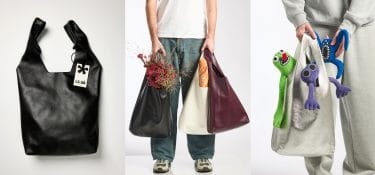How to save the leather goods sector from the crisis: that was the focus of the extraordinary open City Council meeting held in Scandicci on the evening of Thursday 3 July (click here to watch the replay). Titled “Fashion and leather in Tuscany: understanding the crisis to shape new development scenarios”, the session featured contributions from all the key players — institutions, politicians, business representatives and trade unions from the district. All except one: luxury brands.
Scandicci in crisis
The discussion was grounded in hard numbers. Over the past 18 months, the Tuscan fashion sector has seen a 22% drop in export turnover — a dramatic fall compared to the -5.1% recorded across the rest of Italy. But the most telling figures came from regional employment councillor Alessandra Nardini, who revealed that 45 labour disputes are currently open in Tuscany, 15 of which are in Scandicci and Lastra a Signa. In real terms: over 860 workers affected and more than 330 redundancies already declared. “These are figures that send a shiver down your spine and starkly illustrate the severity of the crisis”, said Nardini (source: Ansa).
Everyone at the Council Meeting
Key words at the session were collaboration, innovation, and internationalisation. But the absence of the main stakeholders — luxury brands — was striking. Bringing them into the conversation to create opportunities for dialogue and cooperation is seen as essential. Stefano Giacomelli of Tivoli Group and vice-president of Assopellettieri believes that the sector’s recovery rests on five pillars: legality, environmental sustainability, economic sustainability, innovation, and internationalisation. “The crisis will end”, he said, “but we’re unlikely to see the same volumes as before. There’s a strong need to find new production channels, and Scandicci is lucky to have all the major brands located here. We must make an extra effort to win over premium-segment clients who aren’t currently producing in Italy. It’s a long-standing challenge, but one that could now be supported by government initiatives. Plus, the current uncertainty around tariffs could actually benefit Italian firms, which are already receiving enquiries from American brands”.
District-level coordination
According to Giacomelli, it would be useful to coordinate efforts across districts and present a joint position to the government. Assopellettieri, he said, is ready to take on the role of facilitator for such an initiative. He also expressed optimism that the extraordinary council session wouldn’t remain a one-off event, but would be followed by further political action to support the sector.
Saving what can be saved
Andrea Calistri of Sapaf Atelier 1954 spoke on behalf of CNA Federmoda Firenze. “We lost control of our growth. We’ve forgotten about small businesses and let skills disappear. There are no up-and-coming entrepreneurs with their own brands. It’s unacceptable that only two companies are taking part in initiatives like Lineapelle New York (16–17 July) and travelling to the US to find clients. That’s a real issue”. Calistri also outlined the causes of the crisis, including the verticalisation of the system — where major group acquisitions fail to generate fresh resources — and public funding schemes that small businesses simply can’t access. Meanwhile, banks have favoured big groups, expecting value to trickle down. “Now we need to save what we can, but it won’t be easy. We must accept that we’ll emerge with 30% less production capacity, and we’ll be facing unemployment and social problems. New scenarios call for new methods — the old ones no longer work. But the response must be coordinated and collaborative”.
Read also:











